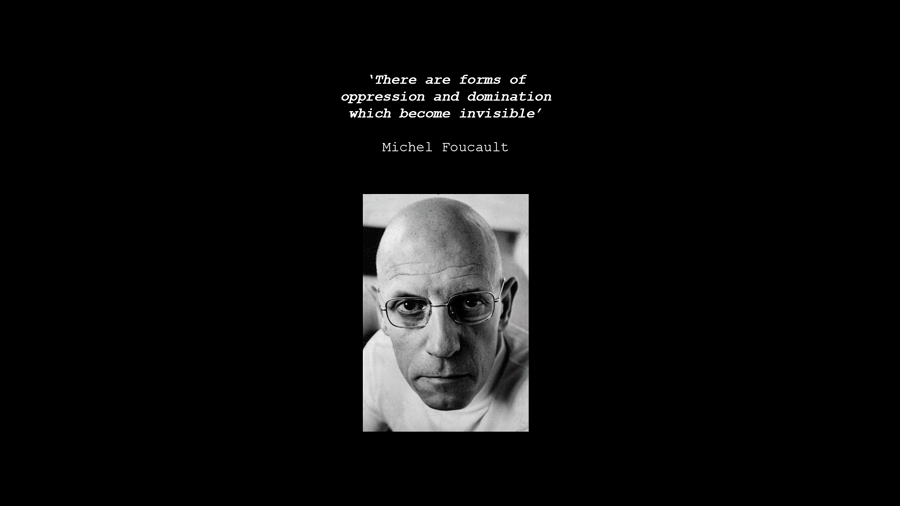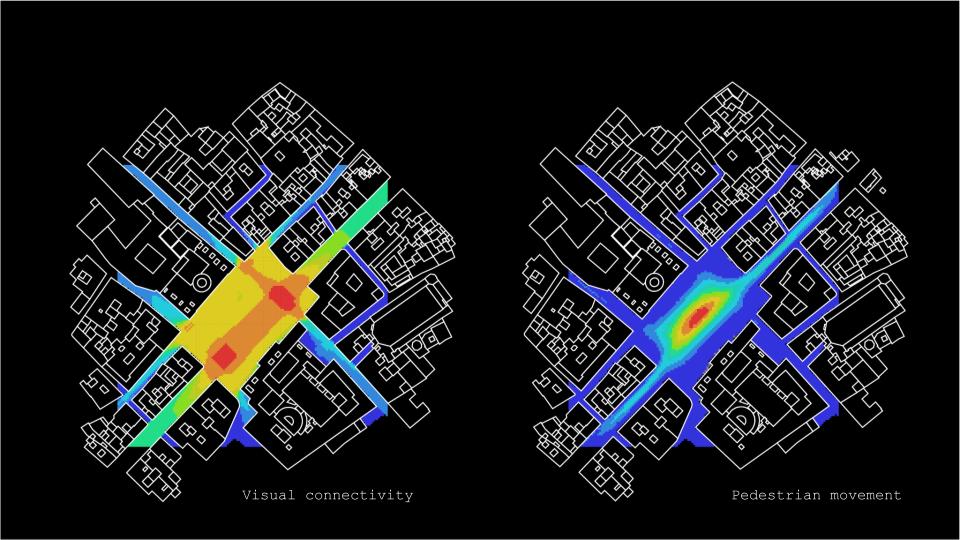Reverse Panopticons
One of the main theories of the historian and philosopher Michel Foucault is that institutions are agents that have the power to survey, control and sanction the behavior of people without them being able to notice. Reverse Panopticons project aims to analyze the influence of figures of authority on pedestrians in the urban setting. It is based on deep learning video analyzing algorithms and Grasshopper spatial analysis. The aim of this study is to ‘survey surveillance’ in order to see how authority influences citizens’ movement and trajectories in public space.

Methodology
To create the analysis the next steps were followed:
- Identify the location and its elements
- Capture video in a different range of the day and different situations
- Run YOLO deep sort algorithm with the category of ‘person’ in order to detect the users of public space
- Track people and create different IDs depending on each individual.
- Manually extract IDs associated with the policemen
- Create a spatial projection onto the site to locate the individual trajectories
- Analyze the trajectories based on 3 categories: Occupany, Speed of travel, and Turning angel.

AUTHORITARIAN ELEMENTS AND SPACE
Elements
After making this assumption, we first defined which would be the figures of authority that would define pedestrian movement and what would be the degree of their authority:
- Person: It would be the presence of police with different degrees based on authority. The degree could be measured from Guardia Urbana (Barcelona police) to Mossos d’esquadra (Catalan Government police)
- Barriers: Temporal barriers in public space that are related to authorities. Their presence could go from a low amount to a high amount of barriers.
- Buildings: Based on the significance of the buildings, we could establish their grade from city to state.
- Pavement: Depending on its regularity, we could define its degree from an organic or homogeneous to a really marked and regular pavement.

We then selected Plaza Sant Jaume to run our experiment due to the strong presence of authority that usually contains. Historically, this space has been associated with the power of the state and contains all of the elements of authority listed above: police, barriers, regular pavement, and two important governmental buildings: Barcelona city council and Palau de la Generalitat. We decided to study four different scenarios that contained different authoritarian degrees regarding the police, the barriers, and the pavement. 
To understand what is the physical setting of the built environment, depthmapx was used to survey the visual connectivity level. The square is enclosed east-west while more open north and south, and in the red zone, pedestrians are mostly aware of the surrounding environment, as well as surveillance level. An agent-based simulation was run based on visibility to see the expected movement of pedestrians and understand the square through this pattern
SCENARIOS
For the four scenarios studied:
- The first scenario had a policeman with a low degree of authority, a high amount of barriers, the regular pavement, and it was recorded for the entrance of the Barcelona city council.
- The second scenario had no police and a low amount of barriers.
- The third scenario had a low degree of police but they were inactive movement and had a high amount of barriers.
- The fourth and last scenario had a policeman with a high degree of authority in movement and a low amount of barriers.
</p>
ANALYSIS
After projecting all the points on the maps, along with the user id’s and the frame counts, we started analyzing the 3 different parameters that we mentioned before: Occupancy, trajectory speed, and turning points of trajectories.
Occupancy
For the analysis of the occupancy, the points of the results of the YOLO algorithm were projected through Grasshopper to create a heatmap of the occupancy of the public space. The results show that when huge barriers and the presence of a guard dominates the public space, people tend to go near them, but when the barriers are less and the guard is not there, the authoritarian figure of pavement is reinforced. In the last two scenarios, we can see that police in movement changes the patterns previously mentioned and creates a less linear occupation.

Speed
For calculating the speed of the users of the public space, all the points were projected and connected through their unique ID in order to visualize the path of each individual. The way of connecting these points was through lines in order to not have a continuous polyline. Taking into account that each point of the YOLO output represents one person in one frame, the longer the distance between two points in a trajectory, the higher the speed. The results of this analysis show that when the higher speed is filtered, depending on the scenario, the pattern of movement changes. When the guard is present in the first scenario with a high amount of barriers, people go faster in front of him/her. In the second scenario, when the police are no longer present, people go slower in front of the entrance of the barriers. At last, when the police is moving, the speed of people varies from the position of the police itself.


Turning Angle
To further understand whether people change their trajectory upon encountering figures of authority we analyzed the turning angel of every person at every segment. The resulting angels were then remapped to understand their values from 1-10 according to the amount a person changes their angel from the previous point. The results of this analysis show that for the first two scenarios, people tend to go more straight near barriers and police and change their direction when they are not under its spatial influence. While in the last two scenarios, represented in a different way, the turning points of people match with the trajectory of the police: when the authoritarian figure crosses the public space, people tend to avoid turning their trajectory.



CONCLUSION
Based on the analysis of the speed, occupancy, and angle of turn we can now go back and rate the degree of authority of each scenario. In that sense scenario, 3 would be the highest degree based on the behavior of people due to the presence of moving police and the high amount of barriers. But when it comes to the second scenario, where police are not present and the number of barriers is low, things such as pavement become more authoritarian in order to bias our movement.
Reverse panopticons is a project of IAAC, Institute for Advanced Architecture of Catalonia developed at Master in City & Technology in 2020/21 by students: Adriana Such, Diana Roussi, Dongxuan Zhu, Hebah Qatanany, Tugdual Sarazin and faculty: Aldo Sollazzo, Iacopo Neri & Soroush Garivani.